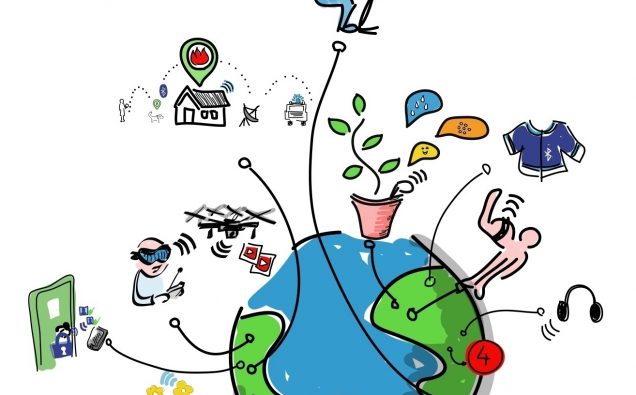
A drawing of the Internet of Things by Wilgengebroed via Wikimedia Commons
As the personal and commercial use of the Internet grows rapidly involving unprecedented amount of data, the devices and appliances that physically connect the Internet are set to have a robust expansion in the years ahead.
According to a recent Forbes magazine report, the global marked of the Internet of Things (IoT) – the network of devices and appliances enabling exchange of data – is expected to a jump in growth from $2.99T in 2014 to $8.9T in 2020, while a Spectrum report says the IoT network will have around 30 billion connected devices by 2020.
These two exponential trends will mean technologies and software making the functioning of these devices will also see a spike in production.
On Wednesday, a new report available at ResearchsandMarkets.com offered a look into how the global market for the Internet of things will grow. The “Internet of Things (IoT) Technologies for Process Manufacturing: Global Markets report examines the technologies, markets and factors influencing the markets for IoT systems.
Markets are forecast based on historical activity and current opportunities, technical advances and challenges, and five subsets of the process market: oil and gas suppliers, food suppliers, metals, plastics and chemicals, according to a CISION newswire release
The three main forecasts are:
“The global market for IoT process manufacturing technologies will grow from $750.4 million in 2017 to $2.7 billion by 2022 with a compound annual growth rate (CAGR) of 28.7% for the period of 2017-2022.
The hardware market will grow from $314.3 million in 2017 to $1.0 billion by 2022 with a CAGR of 26.8%.
The software market will grow from $374.8 million in 2017 to $1.4 billion by 2022 with a CAGR of 31.0%.”
The building of IoT solutions includes three main components: hardware, software and networking, the release explains.
The markets are broken down into subsets. Hardware consists of sensors, programmable logic controllers and distributed control systems. Software involves IoT platforms, big data and security solutions. Networking is available in wired or wireless configurations, it added.














